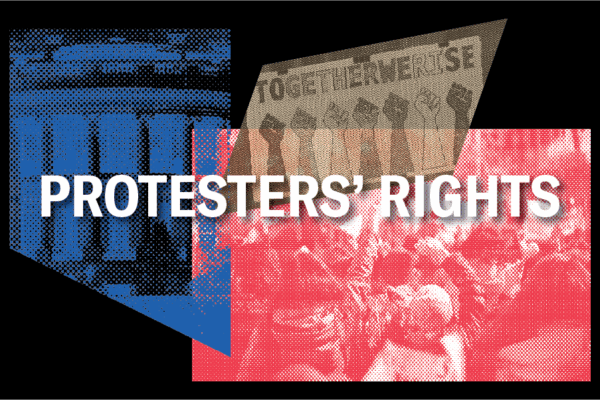Exercising your right to free speech and assembly through mass demonstrations is clearly protected under the First Amendment. However, mass demonstrations can result in unwanted police contact, arrests, or injuries. If you’re going out to protest, here’s what you need to know about your rights.
Downloadable Handouts
Stay Informed
Sign up to be the first to hear about how to take action.
By completing this form, I agree to receive occasional emails per the terms of the ACLU’s privacy statement.
By completing this form, I agree to receive occasional emails per the terms of the ACLU’s privacy statement.

